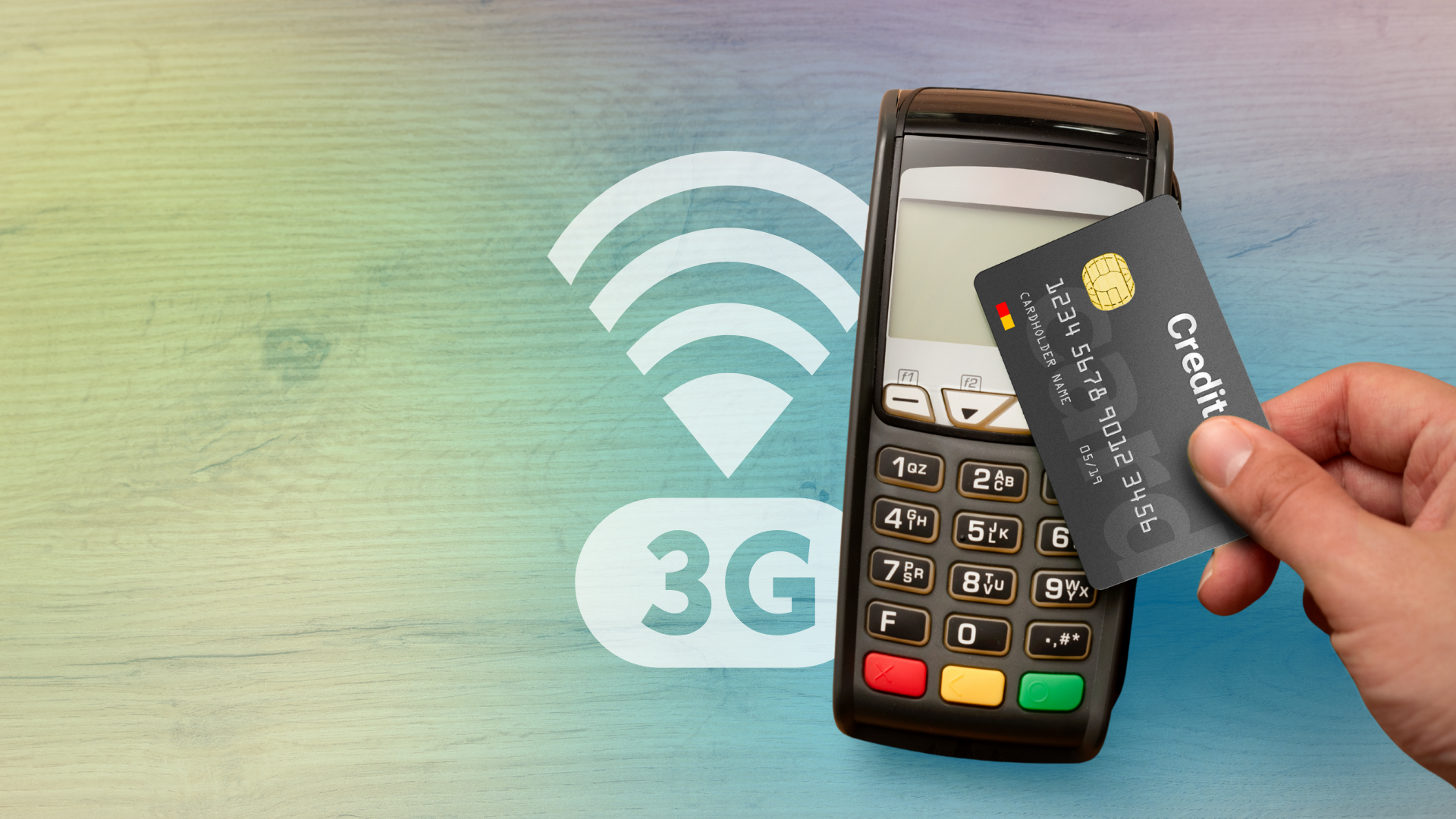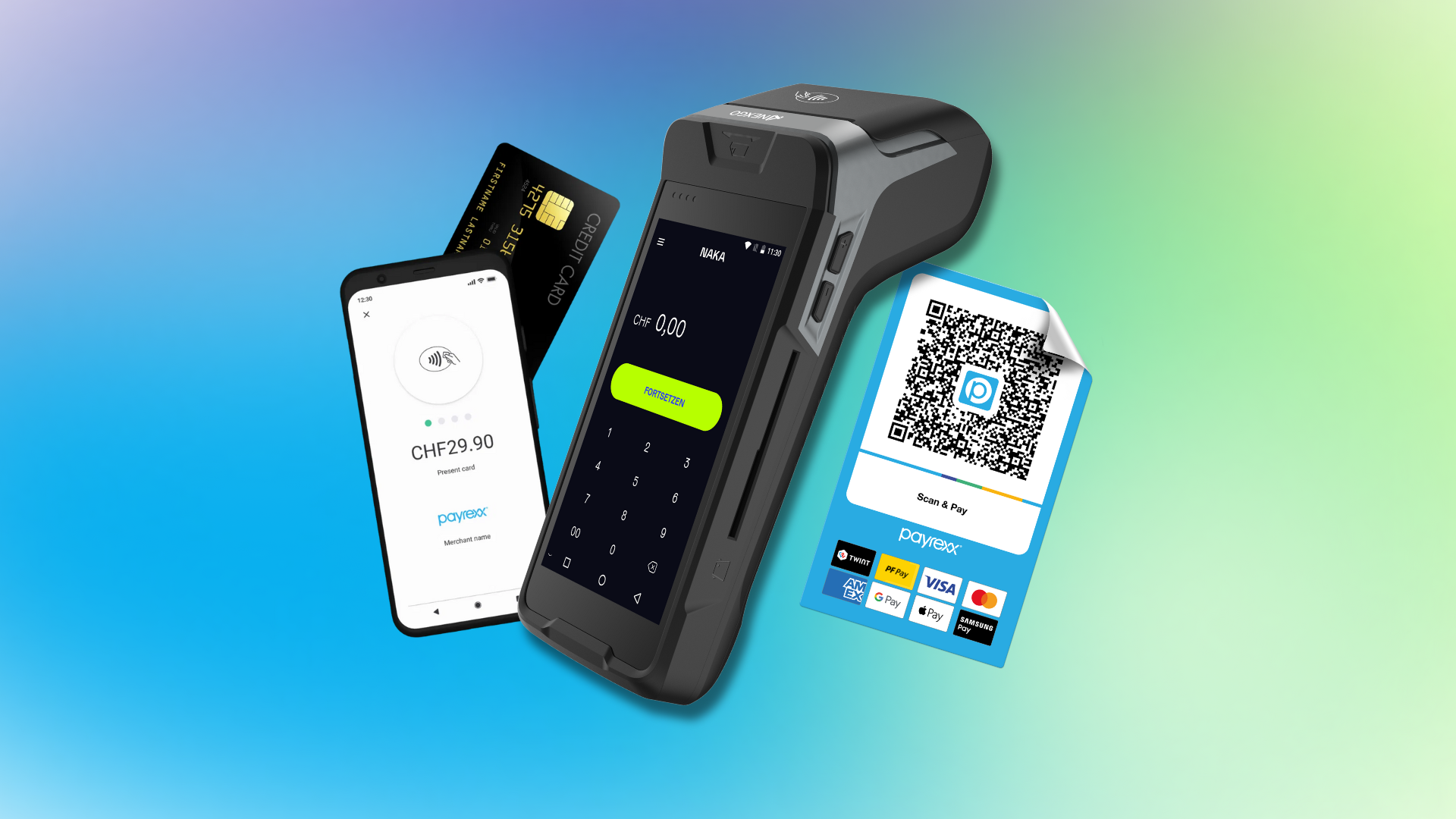3G shutdown in Switzerland: secure your new payment terminal before the outage
Sunrise already did it in June, and now Swisscom will follow suit at the end of 2025: the 3G network will be switched off throughout Switzerland. This may also have consequences for the way you receive payments if you are still using an old 3G-based terminal. In the following article, you can find out the reasons for the shutdown, its consequences and what steps you need to take to protect your company against outages.
Almost 20 years ago, the 3G network ushered in the age of the mobile internet. Today, however, the once pioneering mobile network generation is considered outdated and has been replaced by the more powerful 4G and 5G networks. According to Swisscom, only 1.1 percent of mobile data traffic now runs over 3G, but at the same time the outdated network occupies a good 9 percent of antenna capacity. And this is limited.
To create capacity, 3G will be switched off throughout Switzerland at the end of the year. Although Salt has not yet announced a date, Sunrise already took the step in June 2025 and Swisscom will follow suit at the end of 2025. This means that from 31.12.2025, many old EC devices that are still based on 3G will no longer work. In addition to smartphones and tablets, this also affects card readers.
Your company could also be affected by this step. Especially if your POS terminal has been in use for a while, you should check whether it will still be operational in the future. If not, you need to find a replacement device as soon as possible, otherwise you risk a payment default and a corresponding loss of sales. But don't worry - Payrexx will help you!
How can you tell if the 3G shutdown affects you?
First things first: Of course, this only affects devices that are connected to the mobile network - i.e. those that have an integrated SIM card. However, if your card reader runs purely via the WLAN network or another connection, it does not need to be replaced. However, it may be worth changing it here too, as older devices are usually no longer updated by the manufacturer and may have security vulnerabilities.
You can use the following points to check whether your current card reader (with SIM card) is based on the 3G network:
Check the network display on your device: As with a cell phone, this is usually displayed in the top right-hand corner of the screen. If it constantly shows 4G, LTE or 5G, your terminal is not affected.
Check the network settings of your device: By default, these can be found in the settings under menu items such as "Connections" or "Mobile networks". Here you should be able to see whether your device uses 3G, 4G or 5G.
Look on the back of your device: On the vast majority of devices, you will find a sticker on which - in addition to other information such as the serial number and barcode - the network is also indicated. Take a close look! The text is often written in very small letters.
Ask your manufacturer or check their website. Most terminal providers have clearly communicated which of their devices will no longer work in the future. And if you can't find this information straight away, you can make a support request or a phone call.
Thanks to the integrated SIM card, the POS devices run smoothly anywhere via the 4G network.
What do you have to do if your device is affected?
If your current card reader uses the 3G network, you need to act quickly! If you don't replace the device by the end of 2025, you risk a payment default by 2026. Your device will simply stop working and will no longer be able to process payments. So make sure you get a new device as soon as possible.
If your current terminal is a rental device, you should return it to the provider as soon as possible. Otherwise, you run the risk of the provider refusing to take it back at some point, leaving you with unnecessary costs. Depending on the provider, delivery may also take a long time. You should therefore order as early as possible so that the new device arrives on time.
These are all inconveniences that you save with Payrexx. If you order your POS terminal from the leading Swiss payment provider for SMEs, it will arrive at your premises ready for use within a few working days. All you have to do is switch it on and you can start receiving payments immediately, securely and reliably via the high-performance 4G network.
You are also currently benefiting from an exclusive introductory price: you pay just CHF 9 instead of CHF 25 per month for your POS terminal!
What do you have to do if your device is affected?
As the leading Swiss payment provider for SMEs, Payrexx has set itself the task of simplifying payment transactions for companies of all sizes - whether online or on site. The Payrexx Nexgo POS terminals are not only powerful and reliable in payment transactions, they are also easy to use and order.
With Payrexx you can order a new device in just 3 steps:
Create a Payrexx account: Register yourself or your company with Payrexx, complete the verification process and purchase the standard subscription.
Order your POS terminal: Select your new terminal in your Payrexx account and enter all the details required for the order.
Receive your device: Your device will arrive within a maximum of 10 working days, ready for use. And you can start receiving payments.
With Payrexx, you also get more than just a card reader: the all-in-one solution includes a range of useful e-commerce tools that optimize your online presence. For example, you can generate donation forms, create simple web stores or send invoices via payment links - all fixed components of your Payrexx account, with no hidden additional costs.
Local merchants benefit from the Payrexx Power Package: in addition to POS terminals, payments can also be accepted via QR code or with Tap to Pay. The latter app turns your smartphone into a card reader, giving you maximum flexibility. So you can receive payments wherever, whenever, however and under whatever conditions: the perfect solution for every situation.
The Payrexx Power Package: Tap to Pay, Payrexx POS terminals and Payrexx QR Pay.




